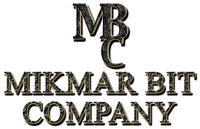Overview of the Different Types of Horse Bits
The bit that you choose to place in your horse’s mouth is probably the most important piece of tack you’ll own. It is the primary way you communicate your instructions to the horse and its fit and function deeply impacts how your horse responds to you. Your horse’s bit needs to fit well and transmit your wishes clearly without causing discomfort or pain.
A horse’s head is our steering wheel when we’re riding it. As long as humans have been riding horses, we’ve put bridles and bits on them. From simple rope tied around the horse’s lower jaw to ancient Roman and Chinese bits that look surprisingly like some of the bits we use today, equestrians over the centuries have spent a lot of time developing bits that work well for both horse and rider.
What Kind of Bits Are There?
There are a huge number of detailed bit designs out there, but really only two types of mouthpieces in different types of horse bits:
- bits where the mouthpiece is without joints, and
- bits with joints.
The cheek pieces vary from short to long, and what kind of pressure they exert.
What Do They Do?
A bit communicates your signals to the horse by putting pressure directly on their mouth. It rests over their tongue and across the bars of their lower jaw (the space where there are no teeth), and is attached to the reins at the cheeks. Over the years, bit design has improved. Through a combination of engineering skill and common sense, what used to be a simple metal structure can now transmit your commands to your horse with much more precision.
Here’s how it works. There are four places on a horse’s head that a well-designed bit can send signals to via pressure on the reins:
- Mouth: The mouth is, of course, the main place horse bits deliver pressure. The bit runs through the mouth and the cheek pieces connect to the reins. If you tug on your reins even gently, the horse will feel it.
- Nose: A strap across the horse’s nose that tightens when you pull on the reins helps send your signal to the horse also.
- Chin: Similarly, a strap or chain that runs under the horse’s chin and tightens when you pull on the reins is a source of guidance.
- Poll: The poll is a sensitive place at the top of a horse’s neck vertebrae. It is located behind their ears, where a bridle sits naturally. Clever bit engineering allows a rider to signal a horse at the poll as well as the other areas. Click here to see a type of horse bit specifically designed to put pressure on the poll when you tighten the reins.
Mikmar horse bits put even pressure on all four of these places when you send a command through the reins. Pressure in four places gets and keeps the horse’s attention while avoiding the possibility of too much pressure in one place.
Why Are They So Complicated?
Too much pressure on a horse’s mouth can hurt them. It can break the skin or make sores on their mouth, make them jumpy or bad-tempered, and over time it can leave a horse with a tough mouth where they pretty much just ignore their rider. Pressure on only their nose and chin (like a hackamore) isn’t a strong enough signal for many horses. And pressure at the poll should be done in moderation, since that is a sensitive spot on most horses.
Even pressure between those four points is the right balance of communication.
There are two basic types of mouthpieces in horse bits, unjointed and jointed. And a well-designed bit won’t just pull on a horse’s mouth, it will send your commands to your horse.

